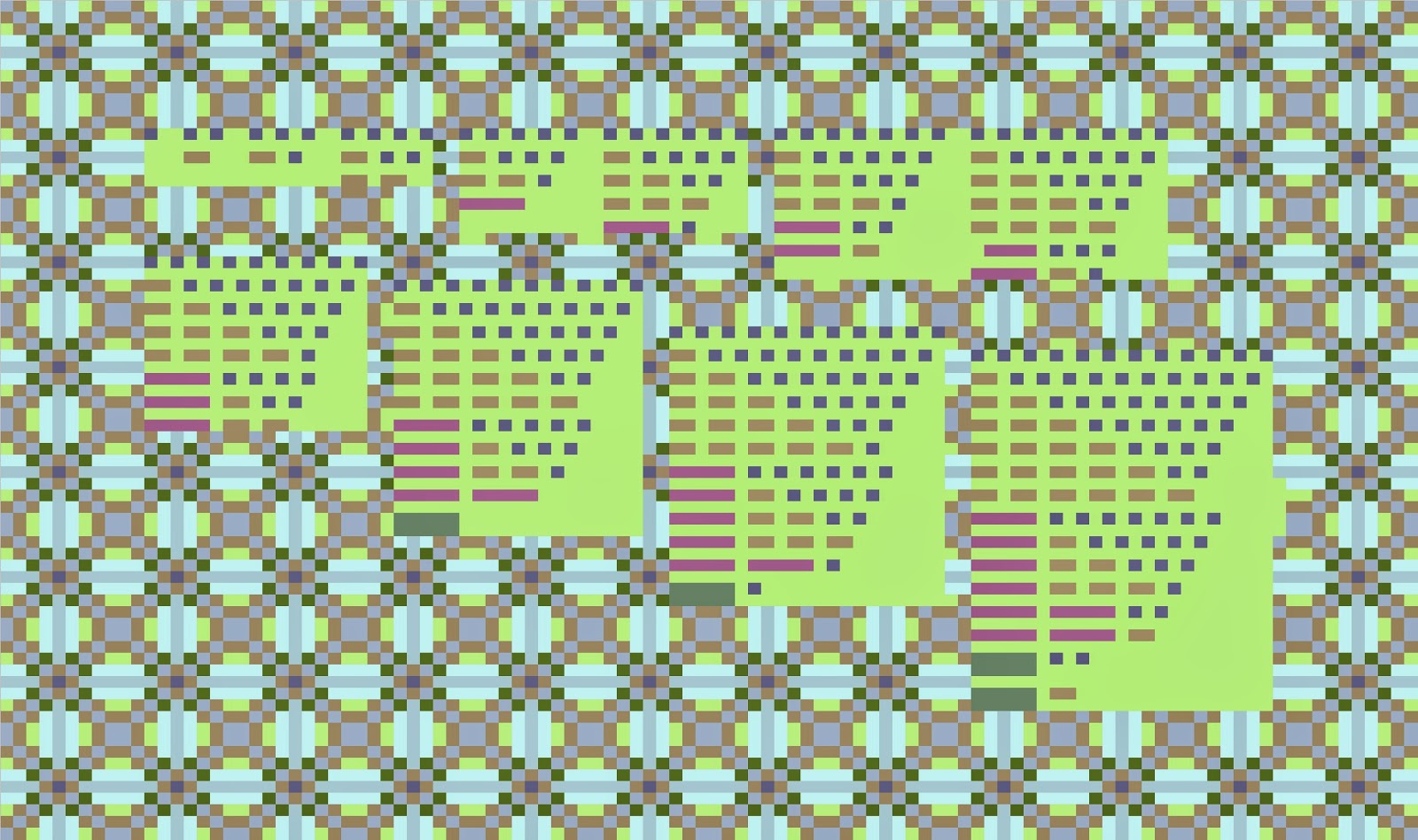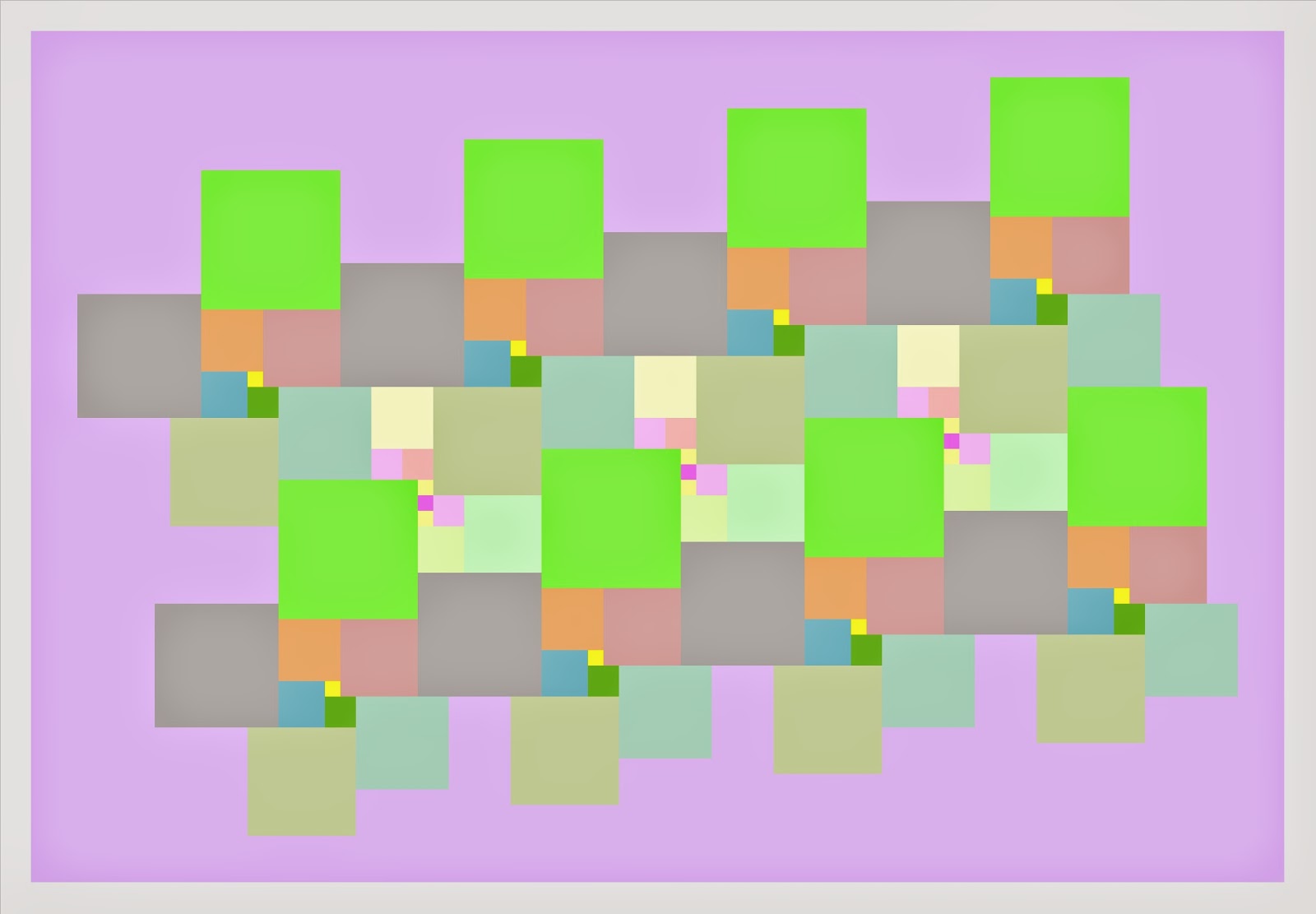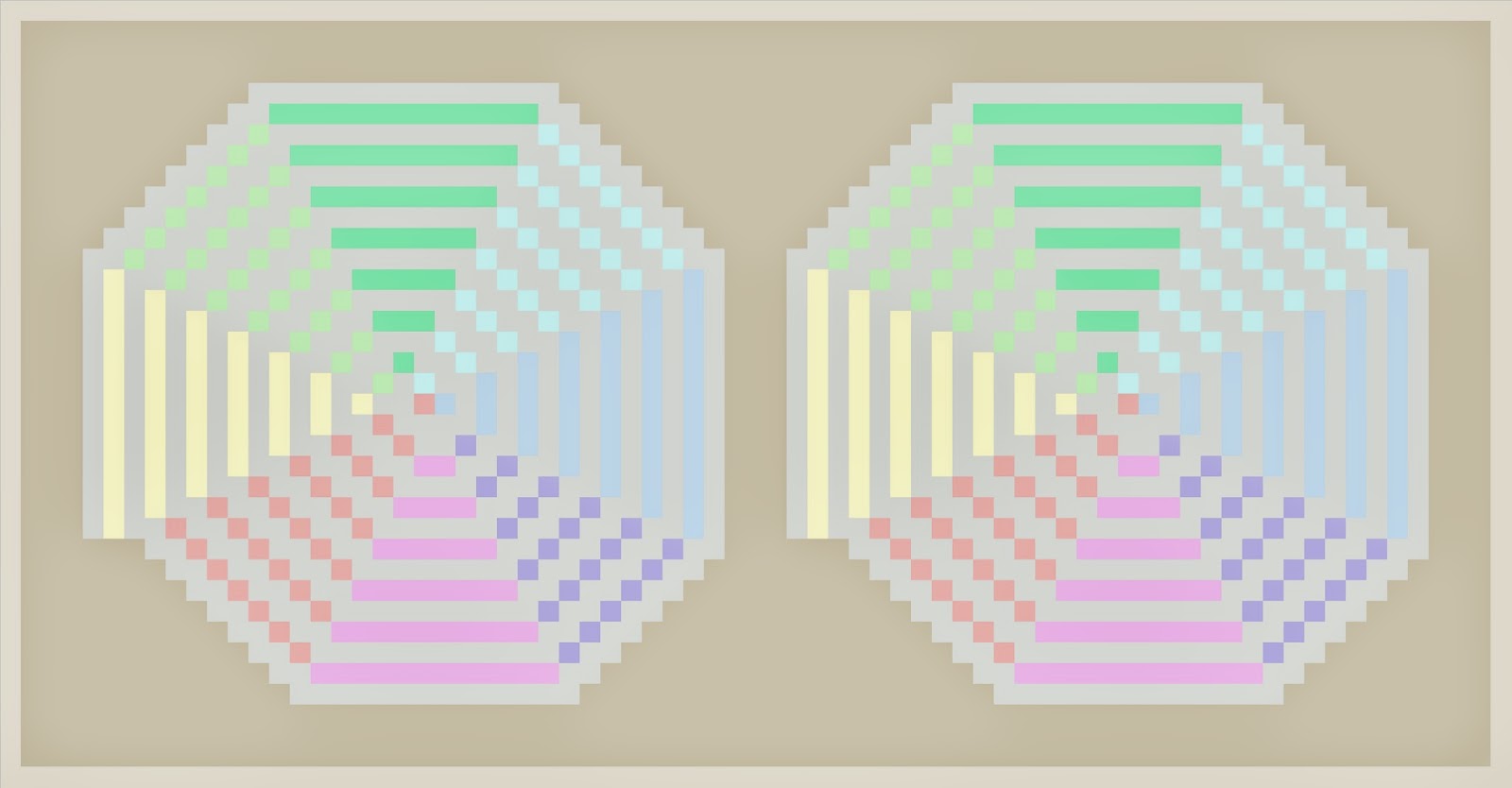the straight trominoes can be packed in a 3 by n rectangle in various ways
Shifting Patterns
patterns, types, type shifting patterns, composite patterns, globular patterns, large pixel art, colour rectangles, coloured square diagrams, short prose, poetry, abstract art, free thinking, inventor, original, number theory, tiling patterns, four regions of natural numbers, fuzzy thinking, Zen, yin yang philosophy, math art
Thursday, 19 March 2015
Tuesday, 17 March 2015
Golomb Vase
CSR math art can be relaxing and enjoyable as meditative math a new way of math thinking that is completely non competitive and focuses on careful craft like thinking and comparisons
Golomb vase requires careful cuisennaire rod counting to discover the numbers used and how they relate to a sequence to do with Golomb Rulers
Golomb vase requires careful cuisennaire rod counting to discover the numbers used and how they relate to a sequence to do with Golomb Rulers
Saturday, 14 March 2015
GCD boats puzzle
there has been some turbulent weather and so it may be that one or more of these GCD boats has a mast damaged by wind, what is the idea behind these GCD boats, and do any of them need some repair work on the masts ?
Thursday, 12 March 2015
Wednesday, 11 March 2015
Tuesday, 10 March 2015
comparisons from sequences related to the " Orloj " clock
| Consider these sequences 121212121, 123212321, 1234321234321, 12345432123454321, Can you get all the counting numbers 1, 2, 3, 4, ... from contiguous segments of these sequences ? One of the sequences from the OEIS about the <1234321> example is sequence A028355 It is a kind of problem where intuition seems valid but proving is more difficult It seems <121> and <1234321> do have the surprising property that one can always find connected segments that generate each of the successive counting numbers in turn. This is not true for <12321> and <123454321> |
Monday, 9 March 2015
the 210 puzzle
two hundred and ten, 210, may seem like a non eventful little number, but it is the 4th primorial and therefore quite important. the primorials are products of consecutive primes starting from 2,
so they start with 2 then 2*3 = 6 , then 2*3*5 = 30 and 2*3*5*7 = 210
what's more amazing about 210, is there are 4 = 2*2 prime factors and the
number of distinct factors is (1+1)*(1+1)*(1+1)*(1+1) = 16 = 4*4 and the
sum of all the distinct factors is 576 = 24*24
furthermore, all the 16 factors can be represented by rectangles and packed into a 24 by 24 square
so they start with 2 then 2*3 = 6 , then 2*3*5 = 30 and 2*3*5*7 = 210
what's more amazing about 210, is there are 4 = 2*2 prime factors and the
number of distinct factors is (1+1)*(1+1)*(1+1)*(1+1) = 16 = 4*4 and the
sum of all the distinct factors is 576 = 24*24
furthermore, all the 16 factors can be represented by rectangles and packed into a 24 by 24 square
the 120 puzzle
find rectangles for all the divisors ( or factors ) of 120 without repeats so the sum of the areas of these rectangles is 360, and they can be packed into 3 copies of a rectangle with area 120 unit squares
Sunday, 8 March 2015
Hamiltonian paths
The 6 Hamiltonian paths on a 16 square, 4 by 4 square lattice grid
tilt the laptop screen at various angles for interesting colour & light effects
tilt the laptop screen at various angles for interesting colour & light effects
Saturday, 7 March 2015
Saturday, 14 February 2015
Wednesday, 11 February 2015
Tuesday, 10 February 2015
Thursday, 5 February 2015
an easy folding pattern puzzle
This is a representation of a Woodall number.
A Woodall number is any natural number of the form n*(2^n) - 1
for some natural number n. The first few Woodall numbers are: 1, 7, 23, 63, 159, 383, 895, … (sequence A003261 in OEIS). What is the Woodall number represented ?
A Woodall number is any natural number of the form n*(2^n) - 1
for some natural number n. The first few Woodall numbers are: 1, 7, 23, 63, 159, 383, 895, … (sequence A003261 in OEIS). What is the Woodall number represented ?
Friday, 23 January 2015
Monday, 19 January 2015
Thursday, 15 January 2015
turning the light on divisor chains
two similar art works based on the concept of divisor chains, a simple example to illustrate
start with a number, say 3. clearly 3 | 3 ( 3 divides 3 )
3, 1 is OK as 1 | (3+1) ;
3, 1, 2 is OK as 2 | (3+1+2) ;
3, 1, 2, 6 is OK as 6 | (3+1+2+6)
3, 1, 2, 6, 4 is OK as 4 | (3+1+2+6+4)
3, 1, 2, 6, 4, 8 is OK as 8 | (3+1+2+6+4+8)
the idea is to consider earliest ( smallest ) whole numbers not yet used
until we find a value is OK, satisfying the required property.
the sum is up to 24. at this stage, adding 5 isn't going to help, neither is adding 7, nor 9,
nor 10, nor 11, what about 12 ?
12 does the job nicely as 24 + 12 = 36 and 12 | (3+1+2+6+4+8+12)
the puzzle is to discover from the grouping and ordering of the coloured rectangles
what are the divisor chains represented from permutations of { 1, ..., n }
start with a number, say 3. clearly 3 | 3 ( 3 divides 3 )
3, 1 is OK as 1 | (3+1) ;
3, 1, 2 is OK as 2 | (3+1+2) ;
3, 1, 2, 6 is OK as 6 | (3+1+2+6)
3, 1, 2, 6, 4 is OK as 4 | (3+1+2+6+4)
3, 1, 2, 6, 4, 8 is OK as 8 | (3+1+2+6+4+8)
the idea is to consider earliest ( smallest ) whole numbers not yet used
until we find a value is OK, satisfying the required property.
the sum is up to 24. at this stage, adding 5 isn't going to help, neither is adding 7, nor 9,
nor 10, nor 11, what about 12 ?
12 does the job nicely as 24 + 12 = 36 and 12 | (3+1+2+6+4+8+12)
the puzzle is to discover from the grouping and ordering of the coloured rectangles
what are the divisor chains represented from permutations of { 1, ..., n }
Monday, 12 January 2015
Saturday, 10 January 2015
Thursday, 8 January 2015
Friday, 26 December 2014
Monday, 1 December 2014
Friday, 28 November 2014
Fairy Board
From the Fairy Board identify:
[1] The 2 ways to arrange 4 non-attacking kings on a 4 X 4 board with 1 in each row and column.
See Hertzsprung's problem: ways to arrange n non-attacking kings on an n X n board,
with 1 in each row and column (A002464)
[2] The 4 ways to place a non-attacking white and black rook on 2 X 2 chessboard.
See Number of ways to place a non-attacking white and black rook on n X n chessboard (A035287)
[3] One of the 4 ways to place 10 nonattacking superqueens on a 10 X 10 board.
See Number of ways of placing n nonattacking superqueens on an n X n board (A051223)
Tuesday, 25 November 2014
Polyknights and F3Layer2
Directional Contiguous Polyknights with 5, 6 and 7 moves, where a 1-move is a stationary knight
F3Layer2 is the pattern arising from applying 3 factorial
to 3 colours and then again to the 3 blocks of dimensions 2 by 3
Subscribe to:
Comments (Atom)

















































